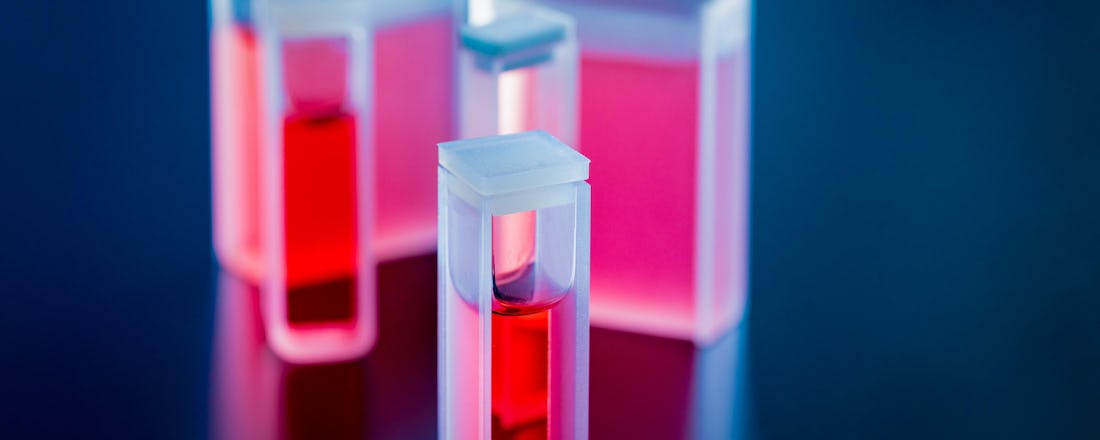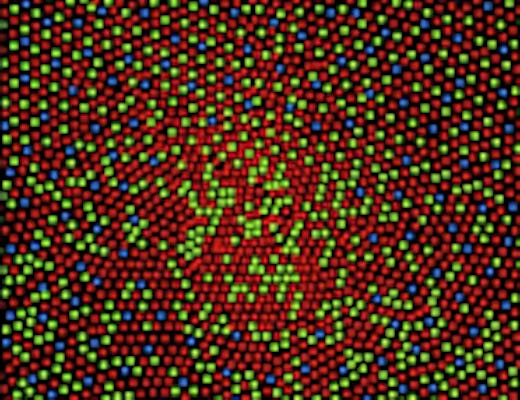What is a Cuvette Holder?
A cuvette holder is a specialized light measurement accessory designed to maintain high accuracy levels during transmission measurements of liquids. Assessing the transmission spectra of a translucent material is an incredibly sensitive process that requires polymer cells or glass substrates to be handled with extreme care, mechanical stability and cleaned thoroughly between uses. Small molecules and substances such as natural oils can radically affect transmission results, so it is important to avoid all but essential physical contact with a sample cuvette to protect the integrity of gathered data.

What Does a Cuvette Holder Do?
The purpose of a cuvette holder is to suspend a cuvette in a stable position throughout the duration of a measurement process. Both discrete and non-discrete cuvette holders exist for distinct applications, providing the basis for a broad range of incident light analysis. Direct-attachment fixtures can support the analysis of a cuvette’s absorbance and transmission spectra in response to incident light, while discrete cuvette holders can enable optical analysis of the fluorescence of liquid samples when attached to a light source. Leading-edge cuvette holders can also provide a temperature-controlled environment to assess the transmission of a cuvette in distinct thermal conditions and in response to optical fibers. These light measurement accessories are robust and versatile, with an incredible range of applications in the field of light measurement and materials characterization.
Applications for Cuvette Holders
The applications of cuvette holders in transmission, fluorescence and absorption analysis are limitless. Potential substrate materials for thin film electronics, infrared (IR) transmissive foils or industrial tissues, and an enormous range of liquids are often characterized according to their transmission characteristics. Cuvette holders can be used to support a range of transmission tests for industrial solutions and to help calculate the optical attenuation of polymer cells. These capacities vary depending upon the type of cuvette holder and the photometric array it is attached to.
How Are Cuvette Holders Used?
Plastic, glass, and quartz are the most
common materials used to fabricate cuvettes for suspending solutions in a
transmissive environment. This environment is used to determine the
reflection, absorption, and transmission properties of the sample by
introducing an incident light and measuring deviations between the
spectral transmission characteristics of the cuvette and the reference
standard light source. Transmission experiments require a stable light
source such as the Crius LED light source, which provides accurate
lighting with an integrated colorimeter to control the light output.
Depending on applications and required wavelength range of interest, the
Crius LED is available in different colors, including full spectrum white. Custom wavelengths are available upon request. All
Crius LED light sources have an ultra-fast stabilization of within
10ms and because of its LED technology, it is suitable for vacuum
measurement applications.
In addition to the light source, a spectroradiometer is used to acquire
the transmission spectra, while reflection and absorbance must be
measured separately or ascertained mathematically by subtracting the sum
of transmitted light from that of the incident light. The nature of the
transmitted light can support distinct conclusions about the physical
characteristics of the observed material, with diffusive and
non-diffusive attributes requiring distinct optical detectors for
optimal data acquisition. This arrangement can be used to determine the
transmissive response of a material for each individual wavelength and
to measure its optical density.
Cuvette Holders with Admesy
Admesy is an expert in light measurement and optical equipment, providing an extensive range of photometric equipment and optical measurement accessories for distinct applications. Our catalogue for the Neo spectrometer includes an cuvette holders for transmission measurement applications as well as many other optical measurement accessories. Explore our full range of light measurement accessories, or contact us if you would like any more information.

